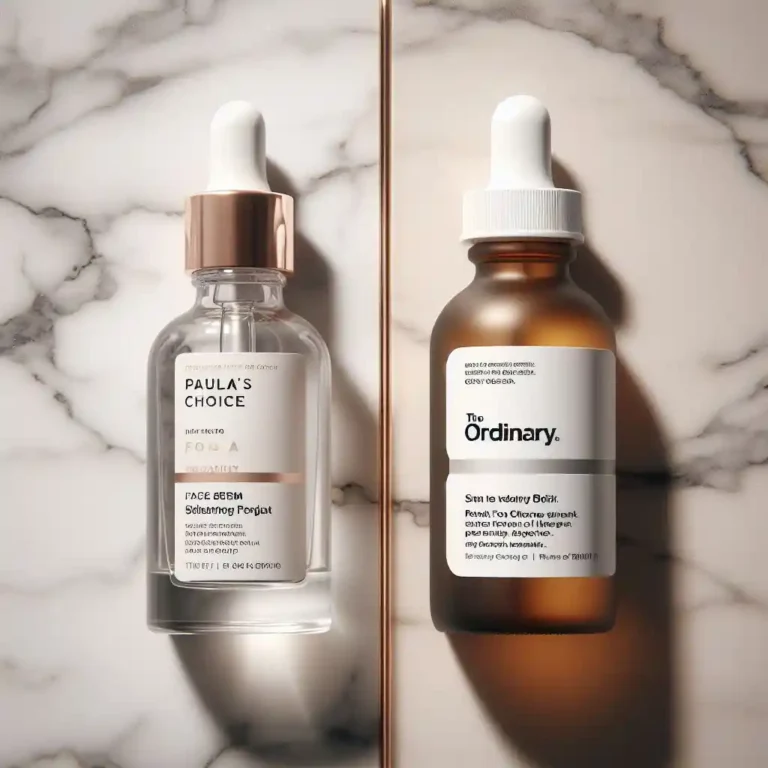Hawaiian Tropic Tanning Oil Review: Your Ultimate Guide
Hawaiian Tropic tanning oil has become a staple in beach bags across the world. This iconic brand promises that perfect golden glow we all crave during summer months. But does it actually work? Is it safe for your skin?
Our comprehensive review dives deep into everything you need to know about Hawaiian Tropic tanning oils.
We examine ingredients, analyze customer experiences, compare different SPF levels, and provide honest insights about effectiveness.
Key Takeaways: What You Need to Know
- Hawaiian Tropic offers multiple tanning oil options with SPF levels ranging from no protection to SPF 30, allowing users to choose based on their skin type and tanning goals
- Coconut oil and cocoa butter are primary ingredients that provide deep moisturization while enhancing the tanning process, keeping skin soft and preventing dryness
- Dark Tanning Oil provides minimal sun protection and should be used carefully by experienced tanners who understand their skin tolerance to UV exposure
- Protective varieties with SPF 15-30 offer safer alternatives for those wanting to tan while maintaining some level of sun protection against harmful UV rays
- Customer reviews consistently praise the tropical scent and moisturizing properties, though some users note the need for careful application to avoid burning
Understanding Hawaiian Tropic Tanning Oil Formulations
Hawaiian Tropic creates several distinct tanning oil formulations. Each product targets different tanning goals and protection needs. The Dark Tanning Oil contains no SPF protection. This formula focuses purely on enhancing melanin production for deeper color development. Meanwhile, the Protective Tanning Oil series includes SPF 15, 25, and 30 options.
These formulations blend coconut oil and cocoa butter as primary moisturizing agents. Coconut oil penetrates skin layers effectively. It provides hydration while attracting UV rays to enhance tanning. Cocoa butter adds richness and helps maintain skin elasticity. Together, these ingredients create that signature tropical scent customers love.
The brand also produces Island Tanning Oil with SPF 6. This middle-ground option appeals to users wanting some protection without completely blocking UV exposure. Each formula delivers different intensity levels for various skin types and tanning preferences.
Dark Tanning Oil Deep Dive Analysis
The Hawaiian Tropic Dark Tanning Oil represents their most intensive tanning formula. This zero SPF product maximizes UV absorption for rapid color development. Users report achieving noticeable results within hours of application. The formula contains concentrated coconut and cocoa butter extracts.
Benefits include deep moisturization that prevents skin from becoming dry or flaky during tanning sessions. The oil creates a smooth, luminous finish that enhances natural skin tone. Many customers appreciate how quickly they achieve visible results compared to other tanning products.
However, this product requires extreme caution during use. Without SPF protection, users face significant risk of burning if application time exceeds skin tolerance. Dermatologists recommend limiting initial exposure to 15-20 minutes. Gradually increase time as skin builds tolerance.
The consistency feels lightweight yet richly moisturizing. Application spreads easily across skin surfaces. Users should reapply after swimming or sweating. The bottle design could improve with pump dispensing to reduce mess and waste.
Protective Tanning Oil SPF Options Explained
Hawaiian Tropic Protective Tanning Oil comes in three SPF levels: 15, 25, and 30. These formulations balance tanning enhancement with sun protection. SPF 15 blocks approximately 93% of UVB rays while still allowing significant UV penetration for color development.
The SPF 25 and 30 versions provide higher protection suitable for fair skin types or extended sun exposure. These formulas work well for beach vacations or outdoor activities lasting several hours. Users can achieve gradual tanning without experiencing painful burns.
All protective versions maintain the same coconut oil and cocoa butter base. They preserve the moisturizing benefits and tropical fragrance customers expect. The addition of chemical sunscreen filters provides broader spectrum protection against both UVA and UVB radiation.
Application technique becomes crucial with protective formulas. Users need generous coverage for advertised SPF effectiveness. Reapplication every two hours ensures continued protection. Many customers prefer these options for daily outdoor activities or initial tanning sessions.
Ingredient Breakdown and Skin Benefits
Hawaiian Tropic tanning oils feature carefully selected natural ingredients. Coconut oil serves multiple purposes beyond simple moisturization. It contains medium-chain fatty acids that penetrate skin effectively. These compounds help attract and intensify UV radiation reaching skin cells.
Cocoa butter provides rich emollient properties. It contains natural antioxidants including vitamin E and polyphenols. These compounds help protect skin from free radical damage during sun exposure. Cocoa butter also improves skin elasticity and smoothness.
Additional botanical extracts enhance the formulation. Many versions include aloe vera for soothing properties. Some formulas incorporate vitamin E for additional antioxidant protection. The signature tropical fragrance comes from natural fruit extracts and exotic oils.
Users with sensitive skin should patch test before full application. While ingredients are generally well-tolerated, coconut oil can cause reactions in some individuals. The fragrance may also trigger sensitivities in those prone to allergic responses.
Customer Experience and Real User Reviews
Customer feedback reveals consistent patterns across Hawaiian Tropic tanning oil products. Most users praise the tropical scent as authentic and long-lasting. The fragrance evokes vacation memories and beach experiences. Many customers purchase the product primarily for this sensory appeal.
Moisturizing effectiveness receives high ratings from regular users. Customers report softer skin texture after consistent use. The oils prevent the dryness often associated with sun exposure and tanning. Many users continue applying the product even after achieving desired color.
However, burning concerns appear frequently in reviews. Some users experienced unexpected burns despite following application instructions. These incidents typically involve inexperienced tanners or those with fair skin types. Proper timing and gradual exposure help prevent such problems.
Reddit discussions show mixed experiences with effectiveness. Some users achieve dramatic results quickly. Others find the products work slowly or require multiple applications for visible changes. Skin type, natural pigmentation, and sun intensity all influence individual results.
Application Techniques for Optimal Results
Proper application technique significantly impacts tanning oil effectiveness and safety. Begin with clean, exfoliated skin to ensure even coverage and absorption. Remove any existing sunscreen or moisturizer that might interfere with oil penetration. Dry skin completely before application.
Apply oil generously across all exposed areas. Use circular motions to ensure complete coverage without missing spots. Pay special attention to commonly forgotten areas like feet, ears, and between fingers. Uneven application creates patchy tanning results.
Start with shorter exposure times regardless of experience level. Begin with 15-20 minute sessions for Dark Tanning Oil. Protective formulas allow longer initial sessions but still require gradual building. Monitor skin response carefully during first uses.
Reapplication becomes crucial for extended sun sessions. Oils wash off during swimming or sweating. Apply fresh product every 80 minutes or after water activities. This maintains both tanning enhancement and any included SPF protection.
Comparing SPF Levels and Protection
Understanding SPF differences helps users choose appropriate Hawaiian Tropic products. SPF 15 blocks 93% of UVB rays while allowing 7% penetration for tanning. This level suits experienced tanners wanting moderate protection during shorter sessions.
SPF 25 increases protection to 96% of UVB ray blocking. This option works well for fair skin or extended outdoor activities. Users can achieve gradual tanning with reduced burning risk. Many customers prefer this middle-ground approach.
SPF 30 provides 97% UVB protection suitable for sensitive skin or prolonged exposure. This level allows very gradual tanning while minimizing damage risk. Families often choose this option for children or adults with burning history.
Remember that no SPF blocks 100% of UV radiation. Even SPF 30 allows some tanning to occur over time. Higher protection simply requires longer exposure periods for visible results. Users should adjust expectations accordingly when choosing protective formulas.
Safety Considerations and Dermatologist Warnings
Dermatologists express concerns about tanning oil use due to increased skin cancer risks. Any intentional UV exposure elevates melanoma and skin cancer chances. Tanning oils amplify these risks by concentrating radiation on skin surfaces.
Age spots and premature aging represent additional concerns. UV exposure breaks down collagen and elastin fibers in skin. This process accelerates when using tanning enhancers. Users may notice wrinkles and age spots developing earlier than expected.
Proper timing and moderation remain crucial for safer use. Avoid peak sun hours between 10 AM and 4 PM when possible. Limit initial sessions to prevent burning. Build tolerance gradually rather than attempting rapid color changes.
Alternative options include self-tanning products that provide color without UV exposure. These formulas eliminate cancer risks while achieving desired appearance. Many customers combine self-tanners with minimal sun exposure for optimal results.
Product Variations and Specialty Formulas
Hawaiian Tropic offers several specialized tanning oil variations beyond basic formulas. Island Tanning Oil SPF 6 provides light protection for moderate tanners. This option appeals to users wanting some safety without completely blocking UV effects.
Weightless Hydration formulas feature lighter consistency for those preferring less greasy feel. These products absorb more quickly while maintaining moisturizing benefits. Users with oily skin often prefer these lighter versions.
Pump spray bottles offer convenient application without messy pouring. These designs prevent waste and ensure more even distribution. Many customers appreciate the practical advantages despite higher product costs.
After-sun products complement tanning oil use with soothing and extending benefits. The brand produces moisturizers and butters designed to maintain tanning results. These products help preserve color while nourishing sun-exposed skin.
Cost Analysis and Value Comparison
Hawaiian Tropic tanning oils provide affordable pricing compared to premium tanning products. Most 8-ounce bottles retail between $8-12, making them accessible for regular use. This pricing allows experimentation with different formulas without significant investment.
Value depends on usage frequency and personal tanning goals. Regular tanners find good value in larger bottle sizes or multi-packs. Occasional users might prefer smaller sizes to prevent product expiration.
Comparison with salon tanning shows significant cost savings. Professional tanning sessions can cost $15-30 each. A single bottle of tanning oil provides multiple applications at fraction of salon costs.
Quality versus price analysis reveals solid value proposition. While premium brands offer additional features, Hawaiian Tropic delivers effective results at budget-friendly prices. Most users find performance satisfactory for the cost.
Environmental and Ethical Considerations
Hawaiian Tropic has made efforts toward reef-safe formulations in recent years. Many products now exclude oxybenzone and octinoxate chemicals harmful to coral reefs. These improvements appeal to environmentally conscious consumers.
Packaging recyclability varies among product lines. Plastic bottles can be recycled in most municipal programs. However, pump mechanisms may require special handling. The brand continues working toward more sustainable packaging solutions.
Animal testing policies show the company has moved away from animal testing practices. Most current formulations use established safe ingredients. This change appeals to customers concerned about ethical testing methods.
Local production in the United States reduces shipping environmental impact. The brand sources some ingredients domestically when possible. These practices support local economies while reducing carbon footprint.
Professional Recommendations and Expert Opinions
Dermatologists generally advise against tanning oil use due to health risks. However, they acknowledge that some people will tan regardless of warnings. In such cases, they recommend protective formulas with SPF 15 or higher.
Cosmetologists suggest gradual approaches for clients interested in tanning oils. They recommend starting with higher SPF products and reducing protection slowly. This method helps build tolerance while minimizing burning risks.
Skin care specialists emphasize moisturizing as the primary benefit of tanning oils. They note that hydrated skin tans more evenly and maintains color longer. This perspective helps users focus on skin health alongside aesthetic goals.
Product testing laboratories confirm that Hawaiian Tropic formulas meet labeled SPF claims. Independent testing shows consistent protection levels across production batches. This reliability gives users confidence in product performance.
Seasonal Usage Tips and Storage
Summer application requires extra caution due to intense UV radiation. Users should reduce exposure times and increase SPF protection during peak months. Pool and beach environments intensify reflection and UV concentration.
Spring preparation allows gradual skin conditioning before summer activities. Starting with protective formulas helps build base tans safely. This approach reduces burning risk during vacation periods.
Winter storage should maintain product quality for following seasons. Store bottles in cool, dry locations away from direct sunlight. Extreme temperatures can affect oil consistency and effectiveness.
Travel considerations include checking airline regulations for liquid containers. Most tanning oils fall under 3-1-1 rules for carry-on luggage. Consider purchasing products at destinations to avoid travel restrictions.
Frequently Asked Questions
Does Hawaiian Tropic tanning oil actually work?
Yes, Hawaiian Tropic tanning oil works by enhancing UV absorption and providing moisturization that promotes even tanning results.
How long does it take to see results?
Most users notice color changes within 2-4 hours of sun exposure, with deeper results developing over several days.
Can I use tanning oil on my face?
While possible, facial use requires extra caution due to sensitive skin and higher burning risk in this area.
Is Hawaiian Tropic reef safe?
Many newer formulations exclude harmful chemicals like oxybenzone, making them more environmentally friendly.
How often should I reapply?
Reapply every 80 minutes or after swimming, sweating, or toweling off to maintain effectiveness.
Can fair skin use Dark Tanning Oil?
Fair skin should avoid zero-SPF products and start with protective formulas containing SPF 15 or higher.
Does tanning oil expire?
Yes, most tanning oils have 2-3 year shelf life when stored properly in cool, dry conditions.
Can I mix tanning oil with sunscreen?
Mixing products may reduce effectiveness of both; choose protective tanning oils with built-in SPF instead.
This comprehensive review provides essential information for anyone considering Hawaiian Tropic tanning oils. Remember that sun exposure carries inherent risks, and consultation with dermatologists is recommended for those with skin concerns or family history of skin cancer.

Hi, I’m Rachel Powell, the founder and creative mind behind FashionBeautyLooks.com. With a passion for all things fashion and beauty, I’ve dedicated my career to helping others discover their unique style and enhance their natural beauty.







